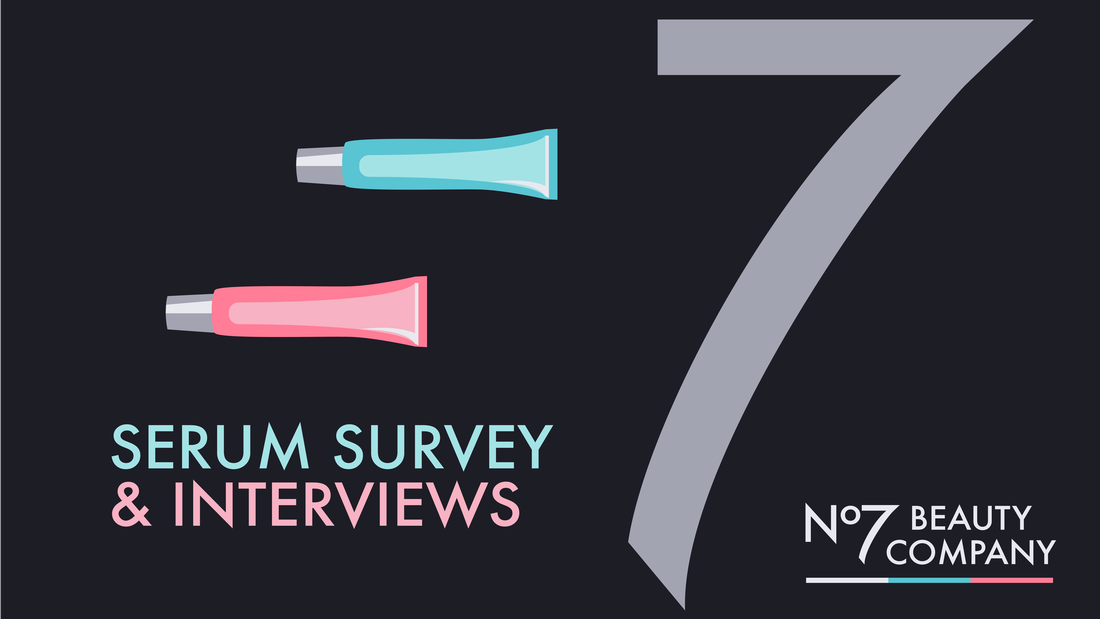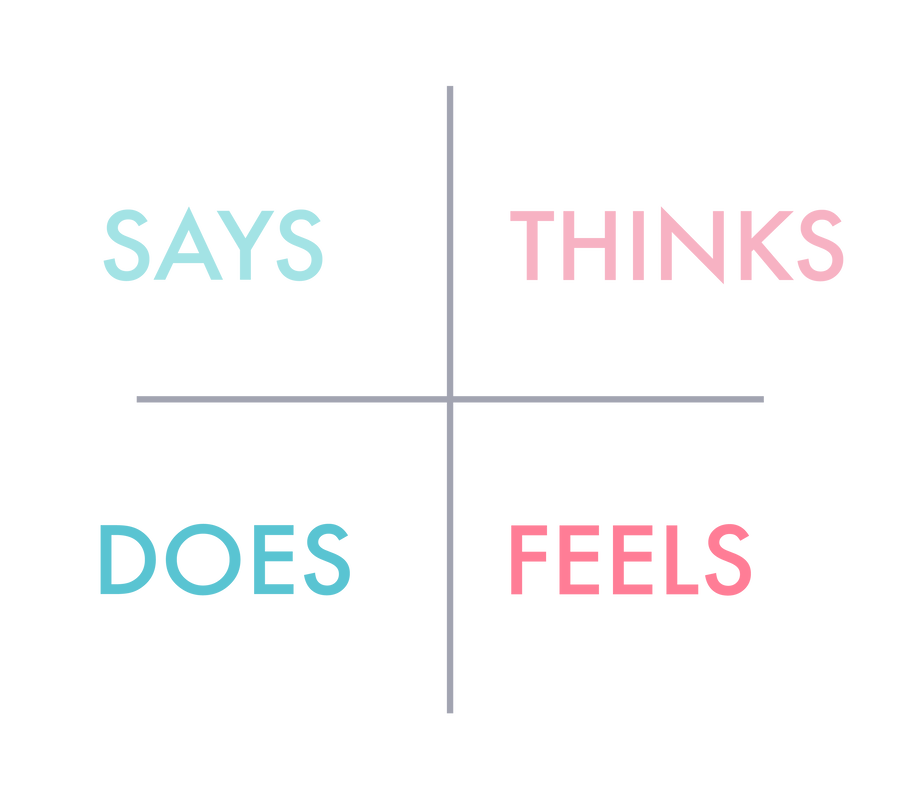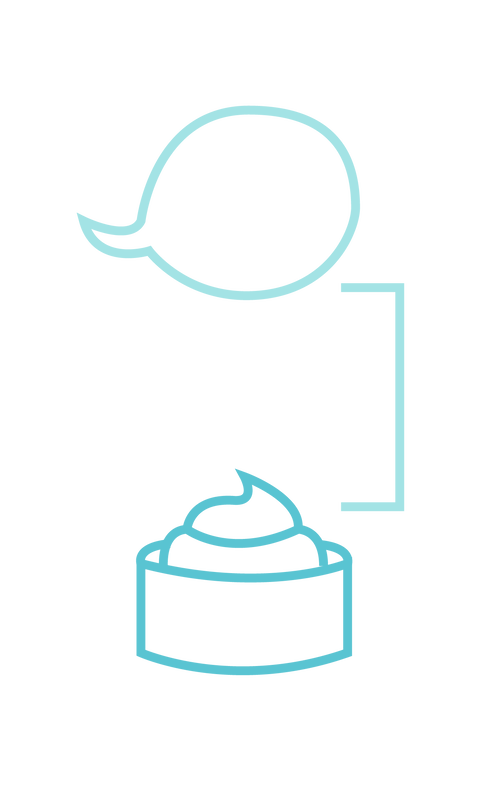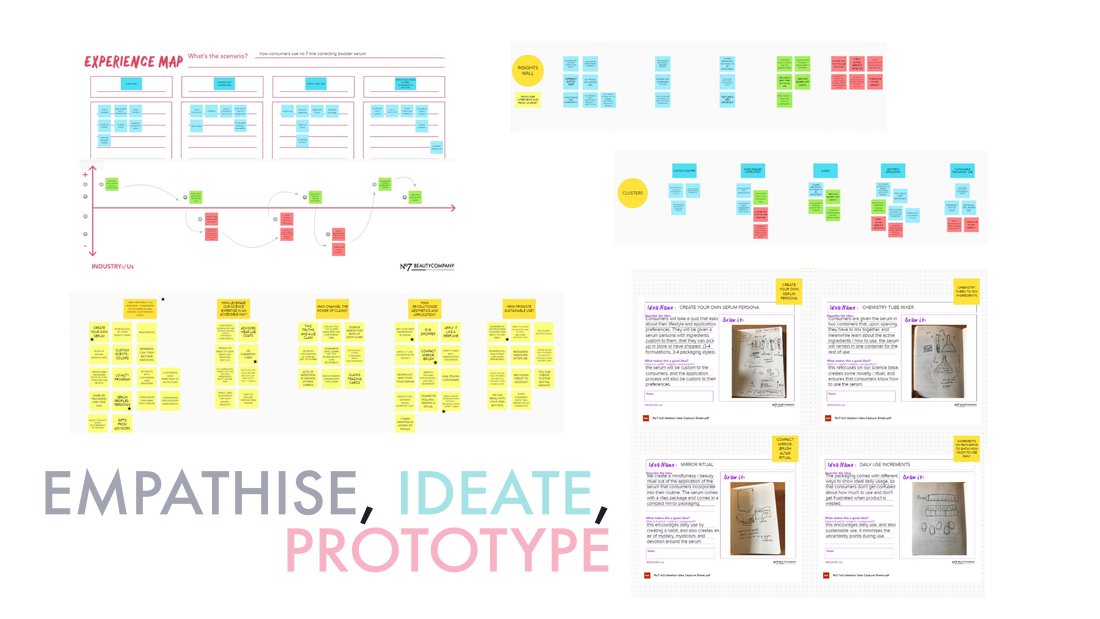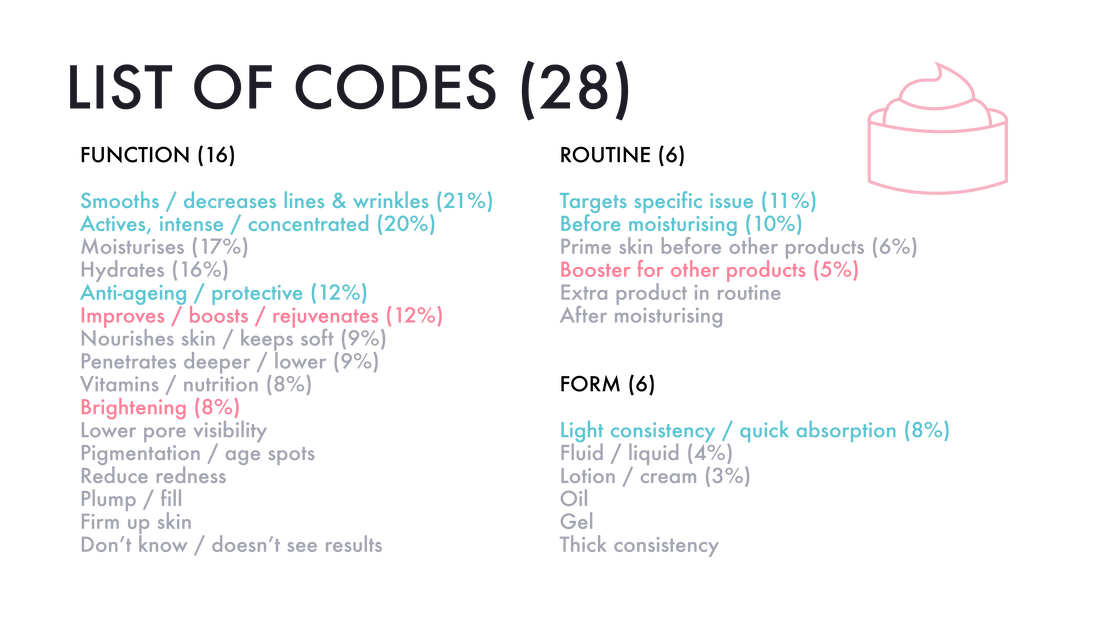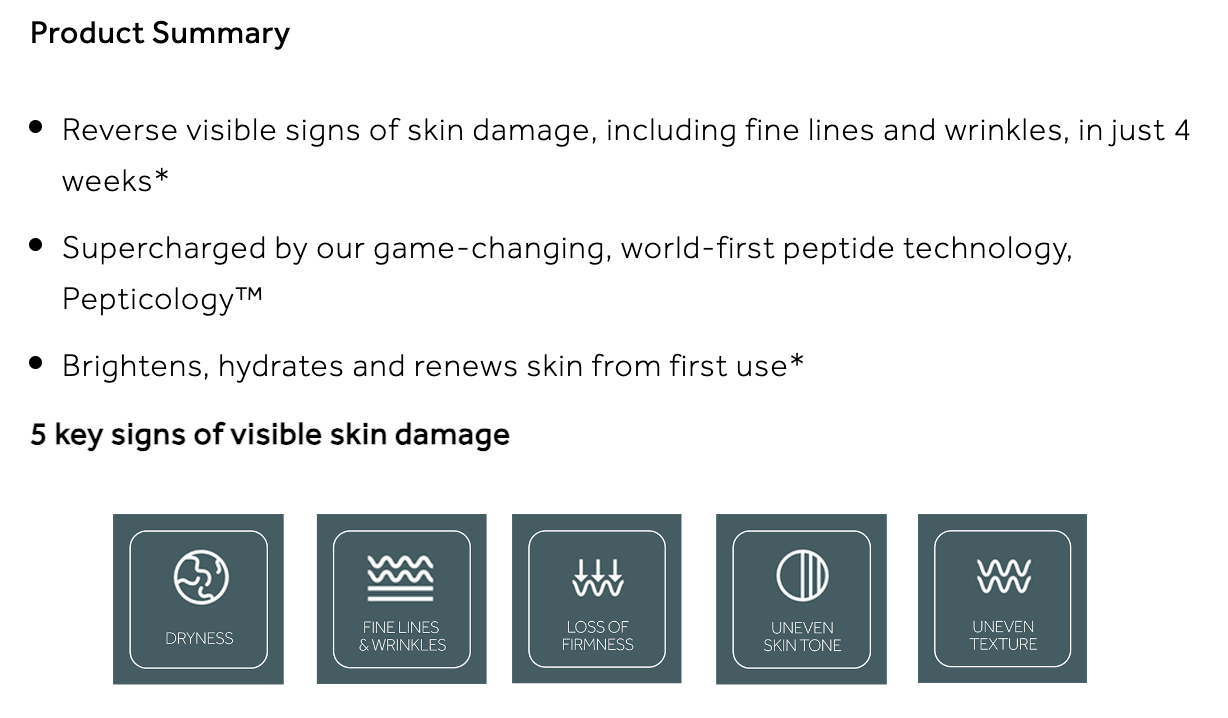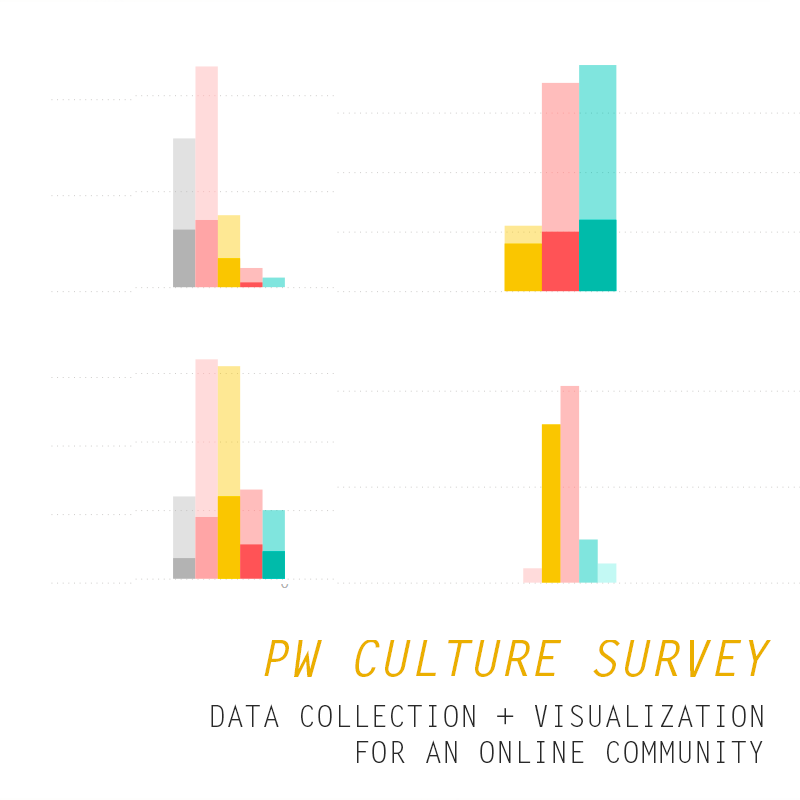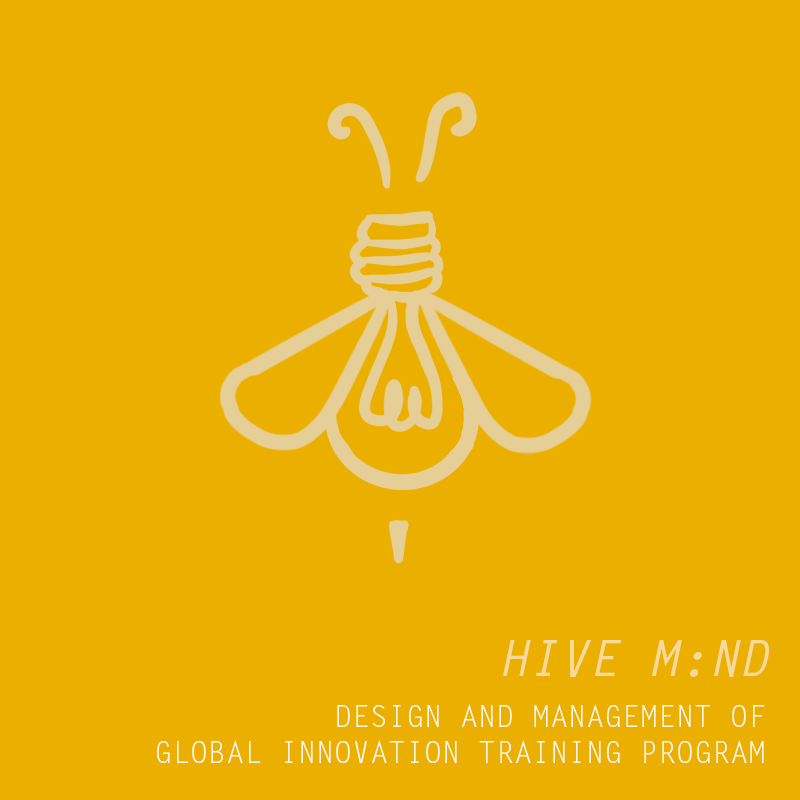no7 consumer research
consumer product analysis with research, product, marketing, teams
methods: interviews, empathy maps, empathy building sessions, consumer survey, comparative analysis
tags: beauty, skincare, consumer products, product development, collaboration
outputs: analysis, product definition + success metrics, team consumer mindset
tags: beauty, skincare, consumer products, product development, collaboration
outputs: analysis, product definition + success metrics, team consumer mindset
context
|
team"research" team = both science + consumer research
fed into product development + marketing teams smaller team of 4 - 6 which fed into larger 20 - 30 person team my roleAs a UX researcher at No7 Beauty, I worked on:
goals
|
As someone helping the organization establish and scale user research, I employed three main methods to educate the team on user research, build user research practices, and get more people on board:
(1) built on existing practices |
(2) trained the team + allowed for collaborative learning |
(3) took initiative to create something & show business impact |
(1) built on existing practices: discovery interviews
No 7. already has a consumer research panel that was mainly brought in to test new products to see reactions to skin and perceptions of product. Leveraging this, I joined up with a few interested team members to deploy their first ever virtual consumer interviews for the purpose of discovery, not just user testing.
|
round one: 12, semi-structured, 2:1
1-hour, over Teams, consumer panel recruits consumer product walkthroughs conducted + analyzed with 2 coordinators |
round two: follow-up interviews
same participants, in progress sent out No7 products to user-test created the demo video to show use |
interview insightsWe created empathy maps to highlight findings, and discovered a say-do gap. For example, one consumer said SPF was important to her, but when she was doing the walkthrough, she realized that her SPF ran out 3 weeks ago and she had not replaced it.
This led to second round interviews (ongoing) to dive deeper into product use. |
(2) training + collaborative learning: empathy building sessions
Building on the design thinking training I employed for Accenture, I created Murals for our team to understand consumer perspective. The sessions explained key topics in user research and recruited team members into actually trying them out to challenge their thinking. This helped the team build empathy and their understanding of user research. Sessions involved:
- literature review of existing Youtube influencer product reviews + comments
- experience maps showing user journeys
- insight walls of pain points + magic moments
- ideation and prototyping
(3) took initiative to show business impact: serum survey
No 7. had already sent out a survey to their consumer research panel and received rich responses, but there was no time or bandwidth to analyze this. Seeing this, I took initiative to analyze the survey, noticing a key business problem as I worked there: Despite being the company that first brought serums onto the market, there was no team definition for serum, meaning that development was driven by scientific advances but not by consumer need or business metrics.
In the survey, consumers were asked: "In your own words, please describe what you think a serum is and does?" and I used this as the central point for my analysis.
In the survey, consumers were asked: "In your own words, please describe what you think a serum is and does?" and I used this as the central point for my analysis.
demographics2500+ women between ages of 50 - 70 surveyed, some users of No7 products and some not; 19 team members
|
methodsconsumer survey: creation of codebook of responses
comparative analysis of consumer and team responses |
I analyzed responses to the free response question to create a codebook of 28 codes, divided into:
- function (comments on what a serum does)
- routine (comments on where in the skincare routine the serum would sit)
- form (comments on a serum's materiality and substance).
results
|
I also filtered the responses into four different categories:
|
insights:
|
common or outlier quotes good for marketing material as well as guides to consumer opinion for the product and research teams
impact
As a result of the insights, I pulled together a definition and product success criteria that I shared with the product, research, and marketing teams. This resonated so much that I was invited to present to the entire company. The definition and criteria, first of its kind, will be used to shape future serums in development. This quick project also showed the company the value of incorporating user research into its product development as a practice.
|
definition: a concentrated formula containing actives to target a specific issue, usually lines and wrinkles / anti-ageing, used before moisturiser, that is quick absorbing
|
product success criteria: deeply penetrating, moisturises, hydrates, brightens, boosts
|
There is a disconnect between the team's ideal definition of a serum and what their target users think. For example, targeting a specific issue was only 11% of responses, despite being the second highest in the team responses (68%).
When I pointed it out, it became clear that either the product marketing had to be clearer, or that other features should be prioritized when creating more appealing serums.
When I pointed it out, it became clear that either the product marketing had to be clearer, or that other features should be prioritized when creating more appealing serums.
learnings
- research plan made for interviews, but the rest was ad hoc: in future, think more about how these tasks done in parallel feed into each other and come up with a more holistic research plan
- also be aware of flexibility: being able to add in elements as needed
- If I were to redesign the process, I send a shorter survey of focused, key questions, and allow for interviews to follow up on survey responses.
continued impact
This definition is still being used by product and marketing. On the US product page for Line Correcting Booster Serum:
No7 Line Correcting Booster Serum visibly reduces wrinkles in one week.* It's formulated with MATRIXYL 3000 PLUS™, No7's next generation age-defying collagen peptide-based technology. Apply this serum before moisturizers, oils, primers and makeup. You can also use as a booster...
Meanwhile, the UK product page for No7's newest serum, which came out after I left, calls out some of the features:
While I no longer have internal visibility, from the public-facing material, the definition, criteria, and insights are still influencing products. |

